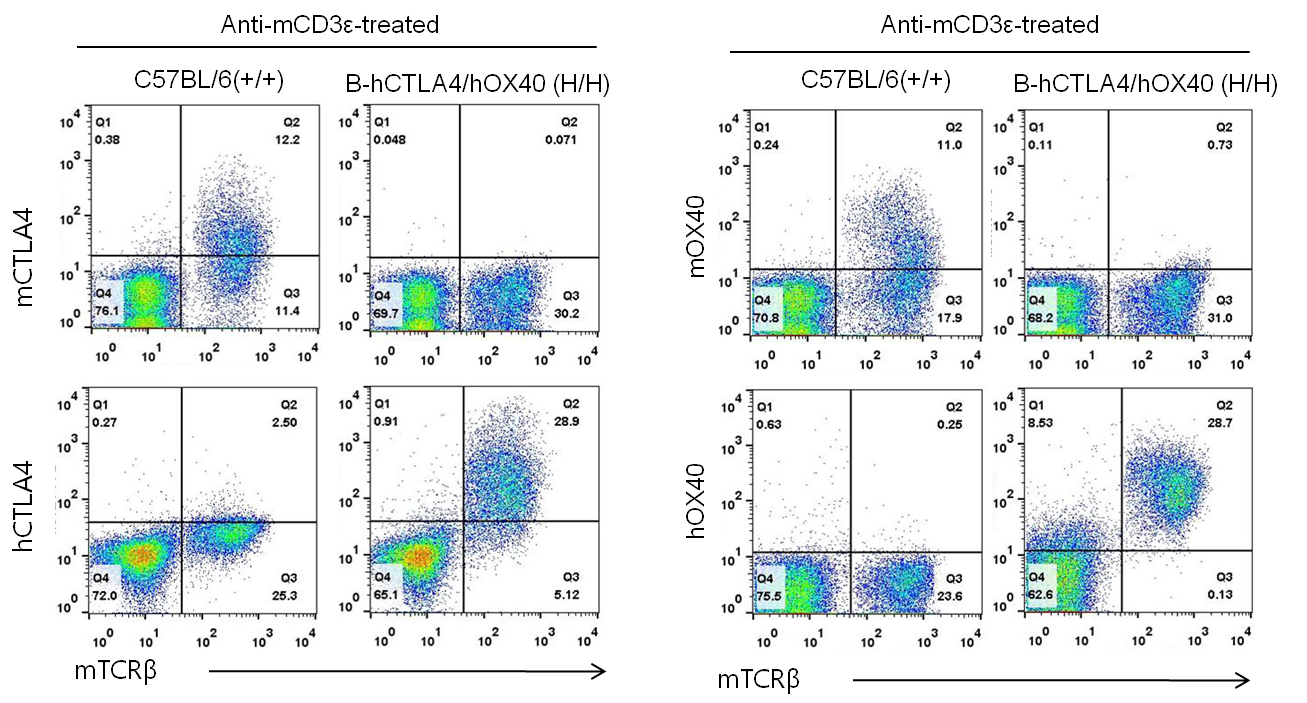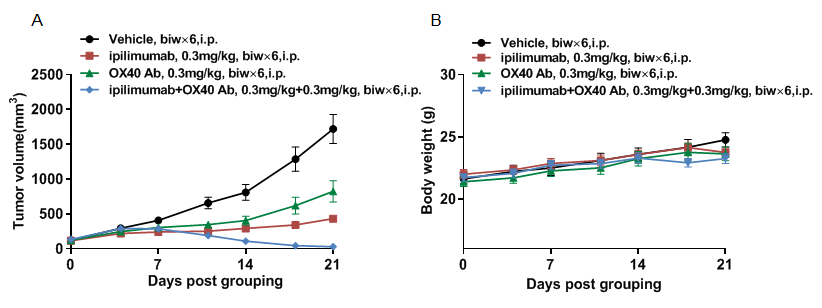


C57BL/6-Ctla4tm1(CTLA4)Bcgen Tnfrsf4tm1(TNFRSF4)Bcgen/Bcgen • 120531
| Product name | B-hCTLA4/hOX40 mice |
|---|---|
| Catalog number | 120531 |
| Strain name | C57BL/6-Ctla4tm1(CTLA4)Bcgen Tnfrsf4tm1(TNFRSF4)Bcgen/Bcgen |
| Strain background | C57BL/6 |
| NCBI gene ID | 12477,22163 (Human) |
| Aliases | Ctla4 (cytotoxic T-lymphocyte-associated protein 4)Tnfrsf4(Tumor necrosis factor receptor superfamily, member 4, also known as OX40) |
on this page
Live
Gene targeting strategy for B-hCTLA4/hOX40 mice. The exon 2 of the mouse Ctla4 gene that encodes the extracellular domain was replaced by human CTLA4 exon 3, and the exons 1-5 of the mouse Ox40 gene that encode the extracellular domain were replaced by human OX40 exons 1-5 in B-hCTLA4/hOX40 mice.

Strain specific CTLA4 and OX40 expression analysis in homozygous B-hCTLA4/hOX40 mice by flow cytometry. Splenocytes were collected from WT and homozygous B-hCTLA4/hOX40 (H/H) mice stimulated with anti-CD3ε in vivo (7.5 μg/mice), and analyzed by flow cytometry with species-specific anti-CTLA4 antibody. Mouse CTLA4 and OX40 were exclusively detected in WT mice. Human CTLA4 CTLA4 and OX40 were exclusively detected in homozygous B-hCTLA4/hOX40 but not WT mice.

Antitumor activity of anti-hOX40 antibody combined with anti-hCTLA4 antibody ipilimumab in B-hCTLA4/hOX40 mice. (A) Anti-hOX40 antibody combined with anti-hCTLA4 antibodies ipilimumab inhibited MC38 tumor growth in B-hCTLA4/hOX40 mice. Murine colon cancer MC38 cells (5×105) were subcutaneously implanted into homozygous B-hCTLA4/hOX40 mice (female, 5-8 week-old, n=8). Mice were grouped when tumor volume reached approximately 150±50 mm3, at which time they were treated with anti-hOX40 antibody combined with anti- hCTLA4 antibody ipilimumab with doses and schedules indicated in panel (B) Body weight changes during treatment. As shown in panel A, combination of anti-hOX40 and anti-hCTLA4 antibody shows more inhibitory effects than individual groups, demonstrating that the B-hCTLA4/hOX40 mice provide a powerful preclinical model for in vivo evaluating combination therapy efficacy of hOX40 antibodies and h B-hCTLA4 antibodies. Values are expressed as mean ± SEM.